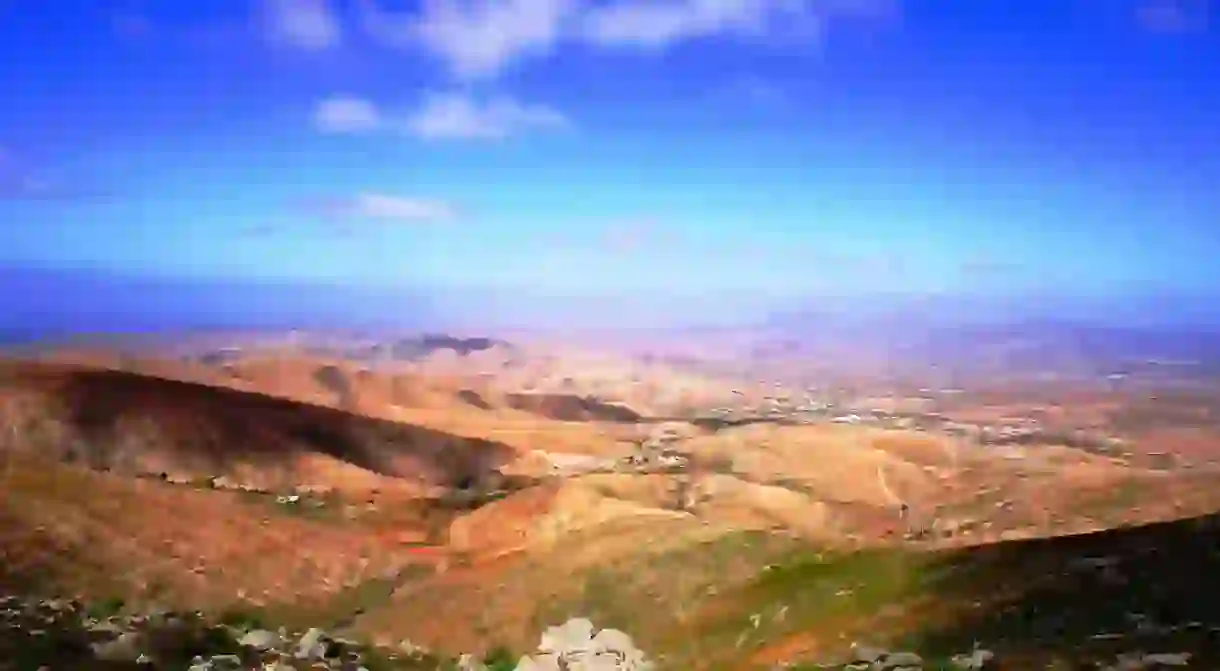10 Fun Things To See And Do In Fuerteventura

Fuerteventura is the oldest and the second largest of the Canary Islands, situated in the Atlantic Ocean, close to the African continent but retaining their Spanish spirit. Fuerteventura offers many natural and cultural attractions, from enchanting white beaches with clear turquoise waters, to an active nightlife and plenty of sports (especially surfing). Here are our top 10 picks for having fun in Fuerteventura.

Beaches
The most obvious reason to visit Fuerteventura is its 150 km of gorgeous shorelines, with pure sun-kissed sand and crystalline waters as far as the eye can see. The characteristics of the beaches differ widely along the island, meaning there’s a perfect playa for every type of traveler here. The beaches of Jandia are some of the most popular in Fuerteventura: 10 km of white sand and turquoise water located on the South end of the Island. Here the water is a bit warmer than in the rest of the island. Playa del Cofete is probably the most famous virgin beach of the Canary islands, a 12 km sprawl of wild natural terrain. If you’re in El Cotillo, you can’t miss La Concha, a distinctive beach in the shape of a half moon, sheltered by a natural lava reef; here you’ll have a chance to see some of the most amazing rare fish that call these waters home.

Corralejo Natural Reserve
Park
Sports
The most widespread sports throughout the Canary Islands are surfing and windsurfing, and Fuerteventura is one of the best locations for both thanks to its strong winds and high waves. You’ll find the best surfing conditions on the western and northern coasts of the island, where the waves are larger. The most highly recommended places for surfing and windsurfing are around the Corralejo reserve and the playa de Sotavento. You’ll also many snorkeling opportunities off the northern coast. If you’re the athletic type and you want to get in touch with the local sporting culture, you can also try your hand at any of the Canarian traditional sports. These include el Juego del Palo, a local martial art form played with a stick (the palo, from which it takes its name), and Canarian boules, which is similar to the French petanque.

Rural tourism
Rural tourism is a widely popular option in the Canary Islands and in Fuerteventura in particular, thanks to the low-populated areas of pure natural beauty still found throughout the island. In Fuerteventura, there are many options for rural accommodation where tourists can experience a more authentic stay in a traditional old Canarian house.

Isla de Lobos
Isla de Lobos is a wonderful day trip destination. This little island is located only two kilometers from Fuerteventura and is easily accessed by a ferry that leaves every day from Corralejo on the north coast. Isla de Lobos is a picturesque mini-paradise for fishermen, sun-lovers and adventurers alike. Once home to many monk seals who gave the island its name, the last human inhabitants of this place were the lighthouse keeper and his family, who left when the lighthouse became automated in the 1960s. Today, Punta Martino Lighthouse remains an important landmark for those visiting the island.
For more info on ferries to Isla de Lobos, visit this link.

The Salt Museum
Museum
The Antigua Windmill Craft Centre
Majorero Cheese
The Atalayita Archeological Interpretation Center
The Sculpture Park
This curious open-air sculpture park is located in the capital city Puerto del Rosario, and it consists of around 100 different sculptures created by different local artists. Most of the sculptures were created during the International Symposium of sculptures, which is celebrated here annually, meaning that the lineup of works to discover here changes regularly from year to year. The sculptures are set up along a pathway for visitors to explore, which makes it very pleasant to stroll around while enjoying the natural beauty and the manmade artwork in tandem.













